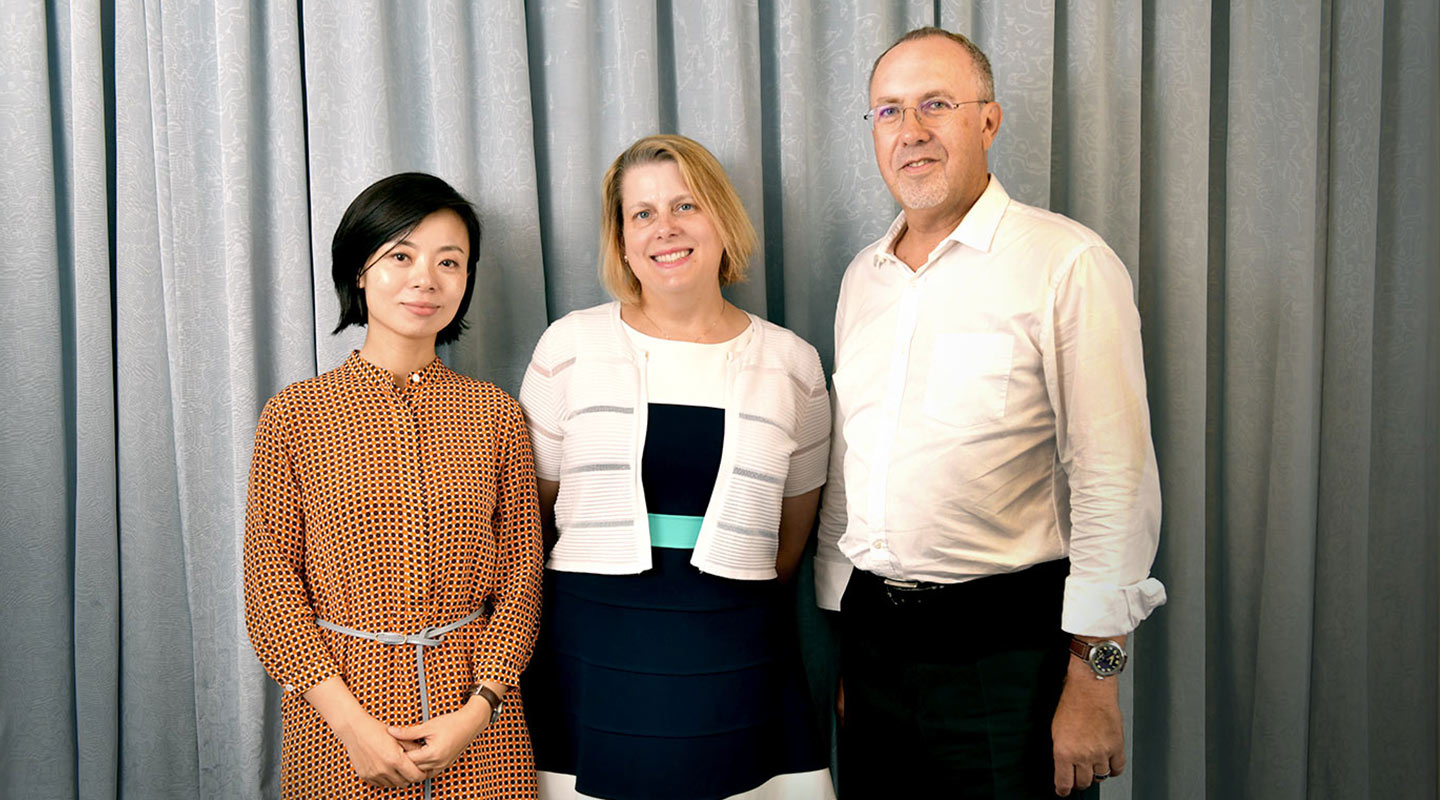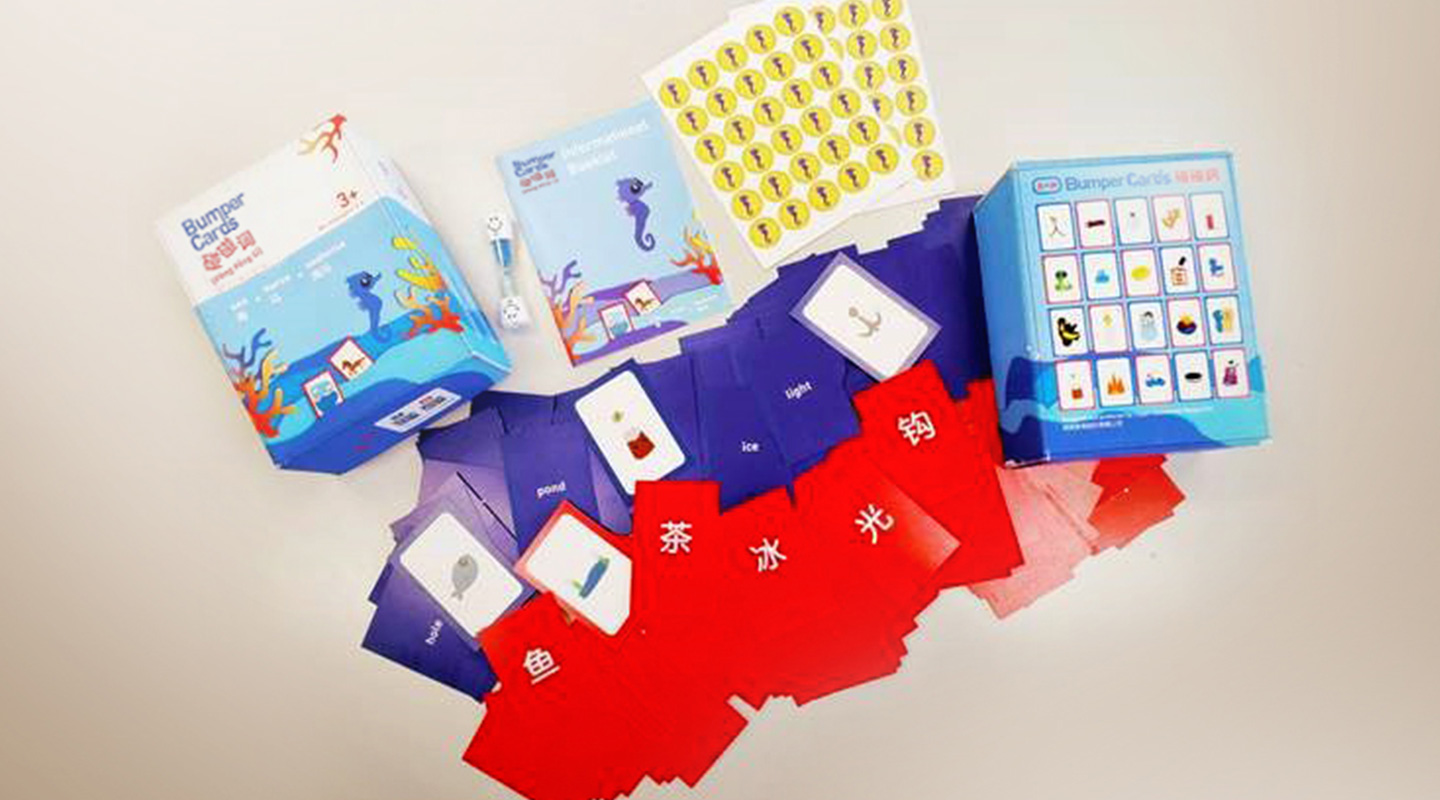Dear readers, With the launch of e-newsletter CUHK in Focus, CUHKUPDates has retired and this site will no longer be updated. To stay abreast of the University’s latest news, please go to https://focus.cuhk.edu.hk. Thank you.
Playing with Creativity
Catherine McBride seeks to integrate more fun for young language learners

While seemingly innocuous, the dictionary’s definition of education— ‘the process of receiving or giving systematic instruction’—reflects a regimented, suspect arrangement. As the above betrays, traditional schooling places little value on creativity. Children in Hong Kong actualize this en masse: rote memorization reigns as the de facto learning approach. Students as young as two carry the expectation to master English, Mandarin, and Cantonese in school. Prof. Catherine McBride, a professor in CUHK’s Department of Psychology, and Dr. Yanling Zhou, an assistant professor at the Education University of Hong Kong, teamed up with international business expert Mr. Helmuth Aberer to found Cayan Educational Design Ltd. Rather than perpetuating the current framework, the team emphasizes learning through games.
A one-way flow of information characterizes much of schooling. Teachers deliver information to students who are then expected to commit it to memory. For language learning, the process intensifies. Students drill vocabulary and study colloquialisms; decks of flashcards are king and language courses inundate extracurricular hours. As personalized, unique phrases are rarely prioritized, scripted conversations often plague second and third language-learners, though this is considered language proficiency.
‘By the time children in Hong Kong are six, they already hate English. Why? Because kindergarten only teaches with memorization. Punctuation, spelling, grammar—there is rarely focus on real communication or fun,’ says Professor McBride.
Language remains, primarily, a communication tool. Treating it as a rigid stockpile of words and grammatical techniques is dispiriting. Stringing together textbook sentences hardly passes for communication, though Hong Kong’s education system seems to reinforce otherwise. ‘Memorization shouldn’t characterize language learning for children,’ explains Dr. Zhou. ‘We’re motivated to integrate learning with games and ignite children’s creativity through play.’
BumperCards, the education startup’s first patented card game, encourages creativity and play. Children can play in Chinese, English, or both. Each card has pictures on one side and words on the other. The goal is to combine cards to make as many compound words as possible. The concept is straightforward, though the innovation lies in the details: there is a premium placed on creativity. Players receive one point for normal compound words (e.g., sunflower, makeup, etc.), while ‘silly’ words are worth two points. ‘Newspaper’ would get fewer points than a made-up word, such as ‘ice-mouse’ or ‘pencil-man’. To further emphasize creativity, players must justify their silly words with an explanation (explanations are usually just as silly).
In BumperCards, there is also a diminished emphasis on incorrectness. In creating a word that doesn’t exist, players are rewarded rather than penalized. The game has no punishments; errors are not highlighted. Conceptually, BumperCards stands antithetical to traditional language learning.

A Social Edge
‘Fun with a purpose’—the company mission statement—is a constant reminder that education should not be boring. Memorization and colourless material make students averse to learning. Cayan Educational Design Ltd aims to alleviate these concerns by affording children greater latitude for creativity and prioritizing fun.
‘We want to reveal how impactful gamification is. Gamification of language learning improves retention and participation. Many educators think if you are having fun, you aren’t learning. We’re disproving that theory. People like games. Games allow us to learn for longer than usual and participate with greater engagement because the learning is fun. The learning is no longer a passive experience,’ explains Professor McBride.
Over 20 academic papers document the validity and efficacy of using creativity as an education focus. Professor McBride’s research group has tested thousands of students across languages such as Persian, English, Dutch, and Korean, as well as Mandarin and Cantonese. BumperCards is built upon a mountain of academic research and evidence although wide-scale implementation starts with convincing parents of this approach.
‘If kids are creative with language learning, they improve their vocabulary and reading. The evidence backs it up,’ says Professor McBride. ‘All we ask is for kids to be creative, but parents are afraid of this. If a child does something “wrong” parents believe their child has a problem. We have to convince parents otherwise by making them receptive to fun and creativity.’
Parents have the opportunity to learn with their children, hand in hand. BumperCards allow participants to be social in their learning. Discussion and dialogue transpire and social interactions become integral to the experience. ‘Most games these days are online or played alone. We wanted to return to sharing and socializing in person. This is huge for parents,’ says Dr. Zhou. The interaction creates a lasting impact on a social, educational and developmental front.
New-Age Innovation
There are two primary avenues of problem-solving: divergent thinking and convergent thinking. Discovering multiple solutions to an open-ended problem through brainstorming is divergent thinking. Convergent thinking is more systematic and less spontaneous than divergent thinking; it entails converging on a single answer to a question. ‘Last January, we went to the biggest toy convention in the world. Of all the aisles full of toys and games, no other product combined both convergent and divergent thinking. We stand alone as a revolutionary game,’ says Mr. Aberer.
In combining convergent thinking—establishing concrete, compound words—and divergent thinking—brainstorming sundry possibilities of word combinations—BumperCards remains the only game to fulfil both modes of thinking.
Launched less than a year ago, Cayan Educational Design Ltd—a social, for-profit company—aims to combine the values of an NGO with the scale and business of commercialization. Commercial success will, ideally, fuel the social impact. ‘There are two goals, a social and a commercial goal, that we try to achieve simultaneously,’ says Mr. Aberer. ‘We distribute the game to kindergartens and NGOs at a very low price. At the same time, we’ll license our product to a corporation for sustainability and scale.’
The education startup received funding with the Sustainable Knowledge Transfer Project Fund from the Office of Research and Knowledge Transfer Services. The group plans to continue refining BumperCards to include other additional languages that allow for compound word creation, such as German, in addition to developing a digital iteration.
Notwithstanding substantial research evidence, Cayan Educational Design Ltd has a demanding task to integrate an unconventional idea into a school system cemented in orthodoxy. Memorization stands as the long-time linchpin for traditional language learning. Yet, as generations evolve so must their education. BumperCards may be the catalyst for a smarter, more creative cohort of students for years to come.
By Phil Rosen, ISO
This article was originally published on CUHK Homepage in Aug 2019.